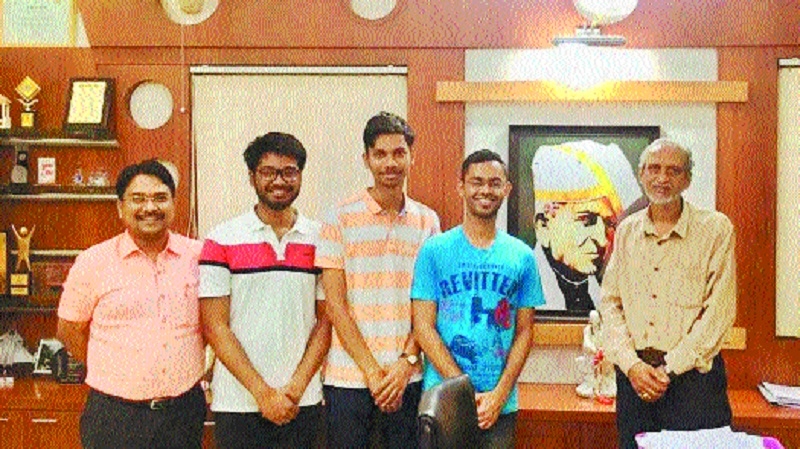VNIT team in top three of ‘Harvard Global Hackathon’ contest
| Date :16-May-2019 |

Principal Correspondent:
Beware, behind leftover food, one loses hundreds of litres of water
We always hear about wastage of food. United Nations always publishes the data on it. But how many of us are aware that behind every leftover food we lose hundreds of litres of water. Visvesvaraya National Institute of Technology (VNIT) team has made it to ‘The Top Three of Harvard Global Hackathon Competition’, the only Indian team to do so. The team presented a unique solution to creating awareness and eliminating food wastage in Hotels and mess, by letting the people know, the amount of water that has been consumed till the time the dish is served on the table. For example, water footprint of one dish of Chola Bhatura is 850 Litre. This study is the outcome of their course ‘Sustainable Engineering”. A team of B Tech Chemical Engineering brought laurels to India.
Vishnu Mamidi, Utkarsh Gupta and Sumit Saboo of Visvesvaraya National Institute of Technology (VNIT) who participated in HackHarvard Global Hackathon made to top three in ‘Environment’ Category. It is a premier Global Tech competition organised by Harvard University and sponsored by Ali Baba Inc. The team was guided by Dr Sachin A Mandavgane who offers a unique course ‘Sustainable Engineering’. The course teaches carbon foot print, water foot print, ecological foot print and low carbon lifestyle. This work is the outcome of the course.
The team also came up with a menu card for a local hotel, with price and water foot print of each dish. The objective of the project is to make the people aware about food wastage through water footprint. For example, water footprint of one cup tea is 35 litters while of one cup of coffee is 70 litres. The water footprint is calculated taking into account water required to from sowing tea seeds to plucking leaves, to transportation to processing unit to packaging to market to grocery shop to finally making the tea on stove. The food that reaches to a dish on a table passes through all these stages of life cycle. Similarly, water footprint of dahi samosa is 570 Litters. It means if one wastes one samosa in a dish it amounts to wastage of 285 litres of water.
One wastes small piece of bread omlet which is equal to wasting 100 litres of water. We use a bucket of water with 40 litre capacity. It means a cup of tea which we consume 4-5 times a day is equal to 4-5 buckets of water. Thus when one wastes food it not only deprived someone from food but causing serious harm to environment. The project focused on multiple solutions mainly being: Web portal(vista): This enables consumers and restaurants to register, analyze all their food wastage that they are doing. Vista shows user their rank, daily trend, consumption statistics , history, star ratings.
Wastage details are automatically updated our partnered restaurant. With all these users are encouraged to save the food the waste. Another solution was to revise restaurant menu cards to show the food print (calories, water, co2, etc) of each individual item. There are other solutions that are displayed on the website foodprint.ecellvnit.org Director of VNIT Professor P M Padole congratulated the team. Dr Mandavgane and his team teaches the concept at schools to make the children aware about not to waste the food.